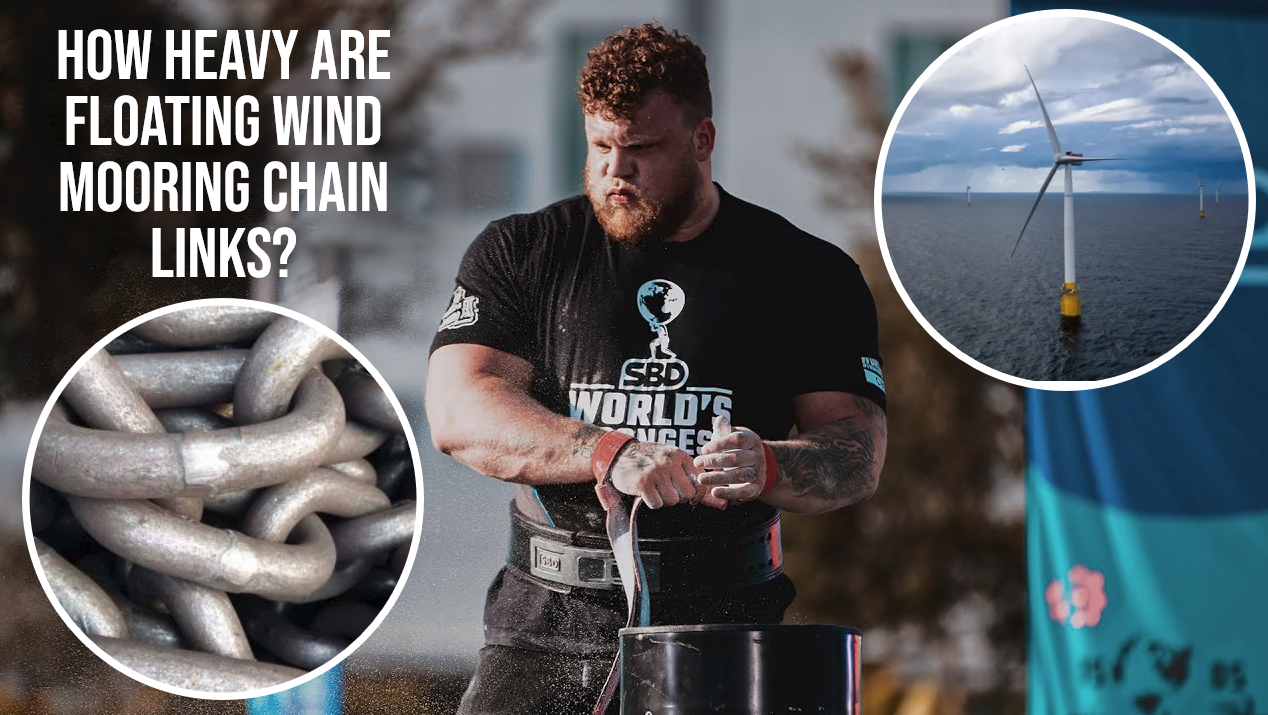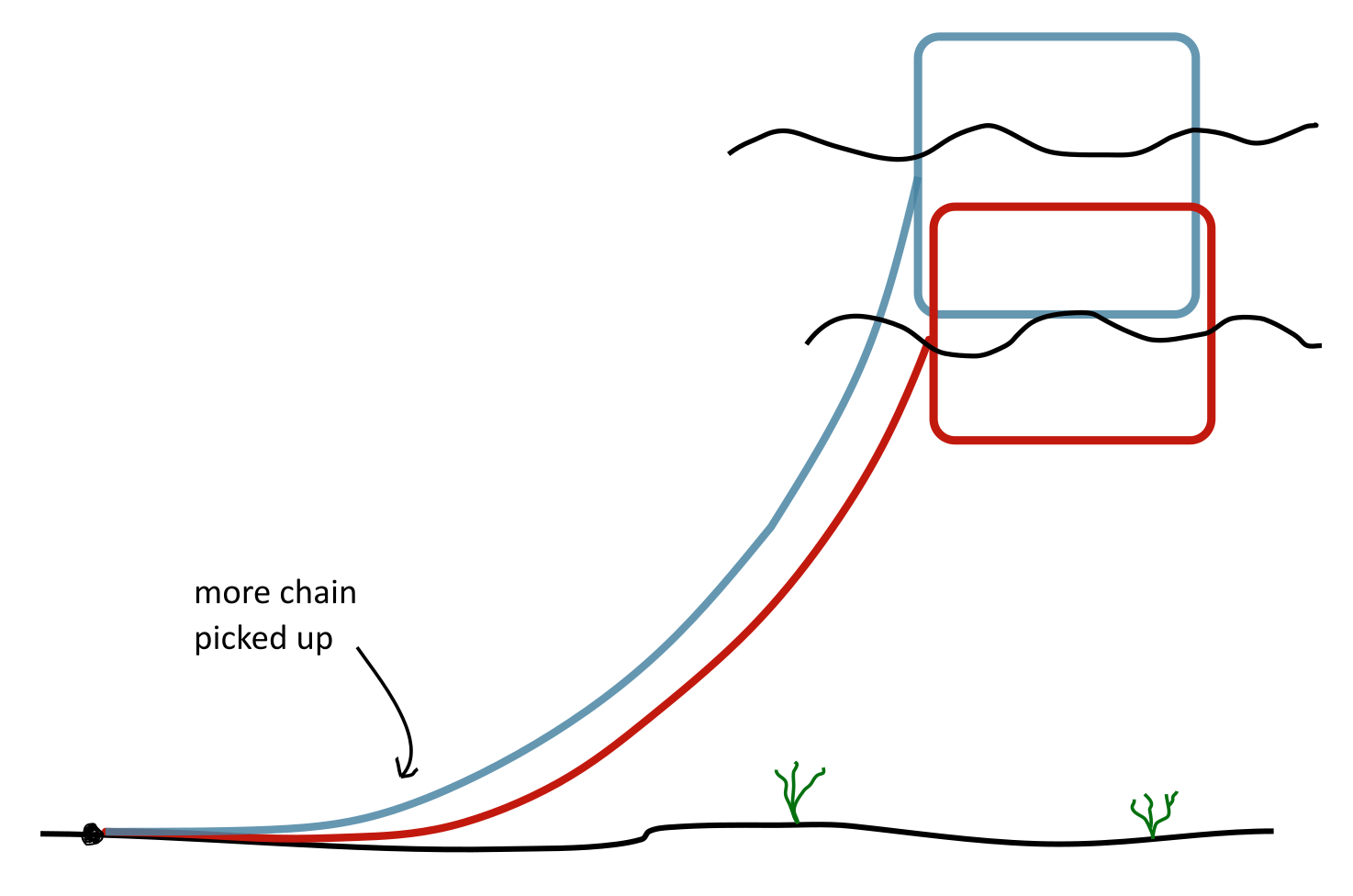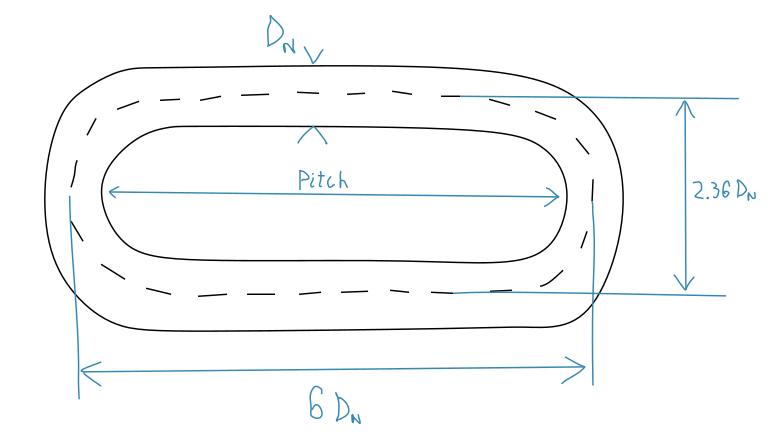How Heavy are Floating Wind Mooring Chain Links?
Article - Originally posted to LinkedIn on 16th October 2023: link

Here's a hypothetical scenario: The world's strongest man, Tom Stoltman, has to lift a single link of a floating wind mooring chain. Are you betting on Tom or the chain link?
For reference, Tom is 6'8''/2.03m and 185kg/29 stone. But before making a guess, we should know that chain links are heavy. This is the key to chain mooring line performance: their high linear mass (mass per unit length). Chains are used in a catenary manner, i.e., like a hanging rope as opposed to a taught manner, so a portion of the chain rests on the seabed. When the floating turbine moves upward, say for a sea swell, it has to pick up more of the chain off the floor. As such, it is an extremely simple system for resisting floater motion and keeping it in place.

Chain links also need to be bulky to compensate for shrinkage over time. This comes from a detrimental combination of corrosion and abrasion and is one issue of chain use over other mooring materials. The steel chain will obviously corrode when immersed in seawater, however, the corrosion itself isn't the problem, this would just create a layer of rust which would protect from further corrosion. The problem comes from chains always moving relative to one another and so continuously abrading away any layer of rust which might build up. As such, abrasion allows corrosion to happen continuously during the lifetime of the chain. This shrinkage is modelled as a nominal diameter loss in mm/year, shrinking towards a centre line, as shown in the figure below. The effects are an associated loss in mass, as well as change in drag properties (including entrained fluid). A less obvious effect is the increase in "pitch" hence the overall length of the chain will increase.

Mooring line enthusiasts (there are dozens of us) will have seen where I'm heading with this: decreasing link mass and increasing pitch is a double-whammy for linear mass. With a corroded chain, the floating turbine would need to pick up a greater length of chain than previously to achieve the same restoring force. Resultingly, the floating turbine can expect less resistance to motion and therefore greater loads as the years go by.
There is actually a secret triple-whammy here. Corrosion losses are given by international standards and these specify different rates for the "thrash zone", "splash zone", and everywhere else. The thrash zone is where the chain contacts the seabed, the splash zone is around the water surface. These two zones experience far greater abrasion due to increased relative motion and/or contact with the seabed. Regarding rates, losses can be as high as 0.4mm/year in the thrash/splash zones, and 0.3mm/year everywhere else. Our secret triple whammy is that, due to the line length changing, more chain will lie on the seabed hence the thrash zone length chain length will increase! Whilst this point likely fits under the category of too-minor-to-model it is not something which I have seen in the literature.
On a personal note, these sorts of changes are very much the impetus for my research/PhD. There are other changes a chain will undergo, all of which impact mooring characteristics and therefore floater/turbine characteristics. Current methods of assessing mooring line health are physical inspections, which can be costly, dangerous, and time consuming especially considering the future of floating wind farms with hundreds of individual mooring lines. This problem is intensified when considering other mooring line materials such as steel wire or synthetic ropes which have far more complex lifecycles. In a nutshell, my PhD is in back-calculating these changes from operational data using physics-based models controlled by Machine Learning algorithms. In the grander scheme, I would term this "parameter twinning" for Digital Twins, and it has applications for virtual monitoring and O&M. But anyway, back to our question!
Now we understand why chain links are heavy, let’s finally find out how heavy a link is. We can work out its weight from its nominal diameter alone, as per the above diagram. For floating wind applications nominal diameters are expected to be between 185-210mm [1]. Using the lower end of 185mm, this would make a fresh, uncorroded link measure 1,110mm at its longest, 621.6mm at its widest, and weight 508kg.
And what can the giant Tom Stoltman lift? I'm no weightlifter but I guess it would depend on the way he is picking it up, e.g., a deadlift is different from an atlas stone and so on. Let's just look at most weight he has ever lifted by any method. And that is...
Drumroll, please...
500Kg! This was as a deadlift [2]. Whilst absolutely incredible, Mr Stoltman would still fall a few kilograms short. On a side note, a 210mm diameter link would weigh in at 743kg, almost 150% of his record.
I hope this piece has been informative, hopefully it puts into perspective the ridiculous size of chains needed to tether these floating monster turbines in place. If you've gotten this far, you might be interested in buying a wind turbine-themed mug I designed (see below), or perhaps for a Christmas gift for someone else. These are made to order by Redbubble and get about £1.50 in commission for each one. Have a look here.

----------------------------------------
References, notes, images
[1] BVG Associates. B.3.2 Mooring lines | Guide to a floating offshore wind farm 2023: https://guidetofloatingoffshorewind.com/guide/b-balance-of-plant/b-3-mooring-system/b-3-2-mooring-lines/
[2] https://breakingmuscle.com/tom-stoltman-deadlift-1102-pounds-18-inches/
Note 1: Tom Stoltman is currently not the world’s strongest man, but he was in 2021 and 2022. But he is from about 2 towns over from where I grew up, so I thought I’d include him instead.
Cover images:
- Tom Stoltman: https://i.ytimg.com/vi/7bAM__H4sAk/maxresdefault.jpg
- Chain link: https://m.jerimarine.com/uploads/201918989/small/studless-link-anchor-chain11373363929.jpg
- Floater: https://www.theguardian.com/environment/2021/aug/29/floating-wind-turbines-ocean-renewable-power